Texture Trends in Kitchens: Moving Beyond Visual Interest
When we think about kitchens, our minds often go straight to color palettes, cabinetry styles, and countertop choices. Recently, texture is taking center stage as one of the most powerful ways to transform a kitchen. Across Montana's Gallatin Valley, designers and builders are discovering it's no longer just about what you see—it's about what you feel, how you interact with surfaces, and how texture shapes the overall mood of the space.
For Bozeman area custom home professionals, understanding texture coordination across multiple rooms has become essential. Today's projects often span kitchens, butler's pantries, mudrooms, and adjacent living spaces, requiring thoughtful integration of textural elements throughout.
From Polished to Touchable
In the kitchen, textures bring depth and warmth to an area that's often defined by sleek finishes. A honed marble island invites hands to linger, while a leathered granite countertop feels approachable and grounded. Cabinetry with matte finishes offers a velvety softness that contrasts beautifully against the crispness of polished hardware. These details create a sensory richness that elevates the kitchen beyond functionality—particularly important in Big Sky Country homes where kitchens often serve as the heart of mountain living.
The shift toward tactile surfaces reflects a deeper desire for authentic, grounding experiences in our daily environments. Montana homeowners, surrounded by natural beauty, increasingly seek interiors that echo the textures found in their outdoor landscape.
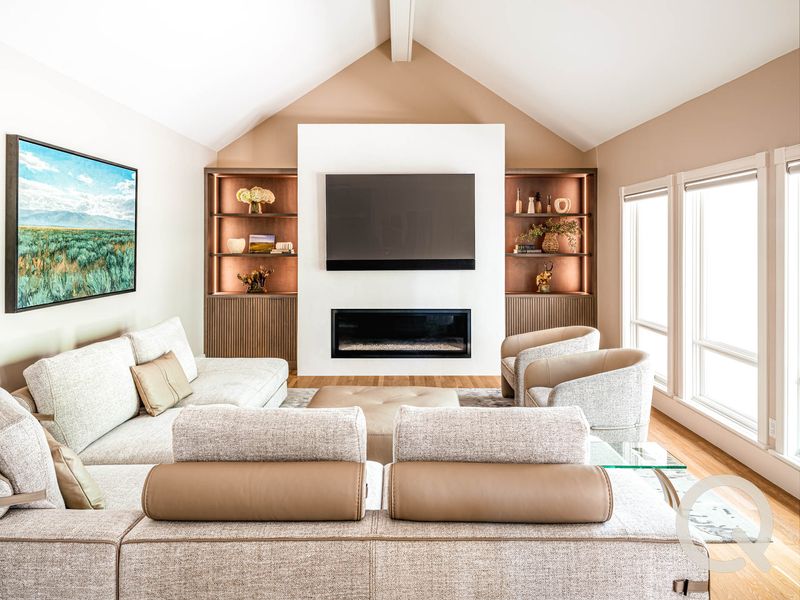
Current Kitchen Texture Trends
Fluted & Ribbed Cabinetry – Vertical grooves in islands, doors, and drawers add subtle rhythm and depth. These details work especially well in open-concept mountain homes where cabinetry becomes a focal point from multiple vantage points.
Leathered & Honed Stone – Countertops with soft finishes offer warmth and natural variation compared to glossy slabs. The matte quality complements Montana's preference for understated elegance.
Handmade Tile Backsplashes – Zellige and clay tiles bring crafted imperfection, adding charm and dimension. Their organic qualities pair beautifully with the handcrafted aesthetic popular in Gallatin Valley homes.
Wood-on-Wood Layering – Tone-on-tone combinations of cabinetry, flooring, and beams feel organic yet elevated. This approach works particularly well in mountain homes where wood connections to the landscape feel natural.
Textured Metal Accents – Brushed brass, hammered nickel, and patinated bronze hardware add quiet richness without competing with dramatic mountain views.
Natural Fiber Elements – Woven rattan, cane, and linen details soften the harder edges of kitchen design while introducing organic textures that complement Montana's natural setting.
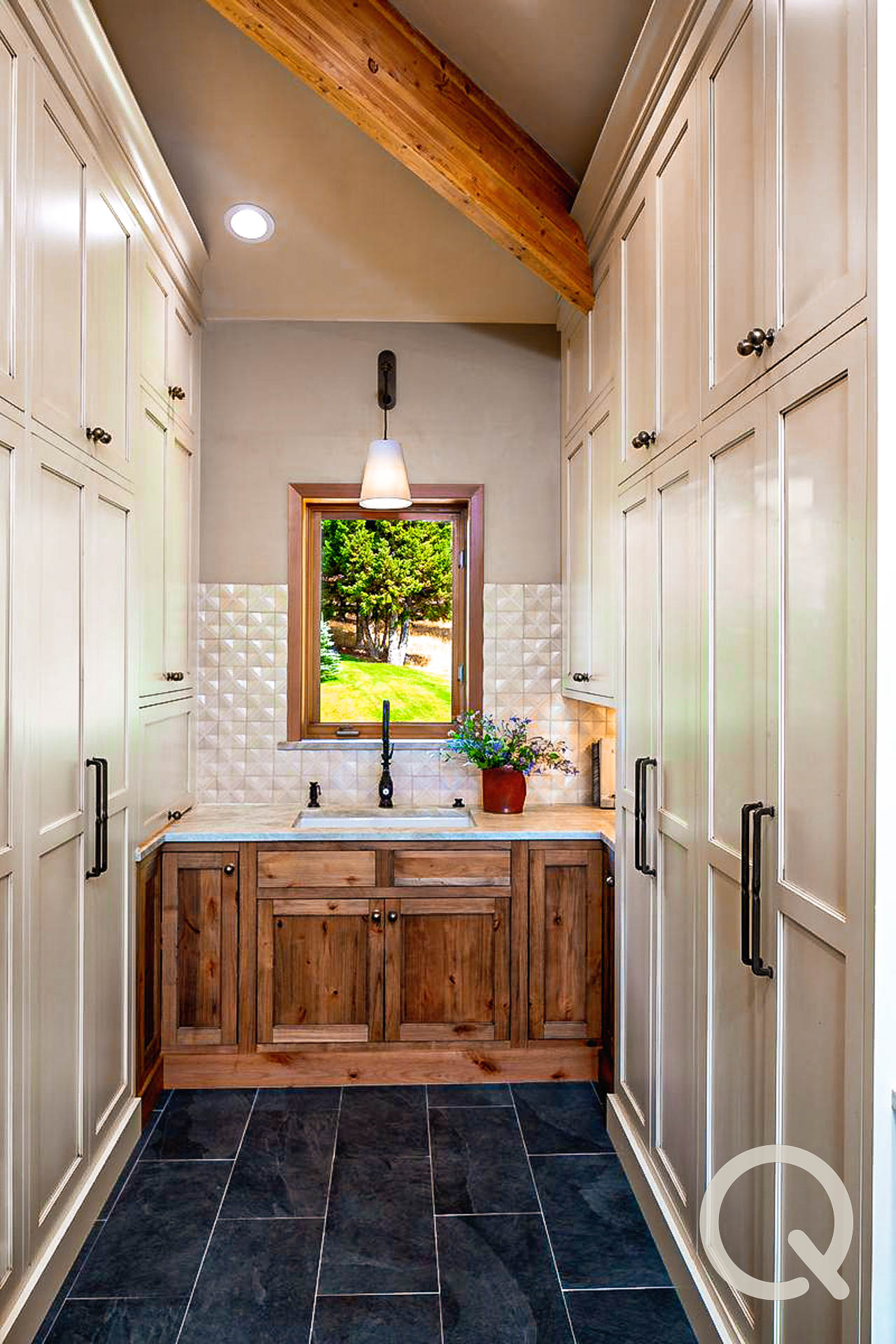
Coordinating Textures Across Multiple Spaces
One of the biggest challenges in modern home design is creating textural harmony across connected spaces. When kitchen projects extend into butler's pantries, mudrooms, or adjacent living areas, coordinating these elements requires careful planning and execution.
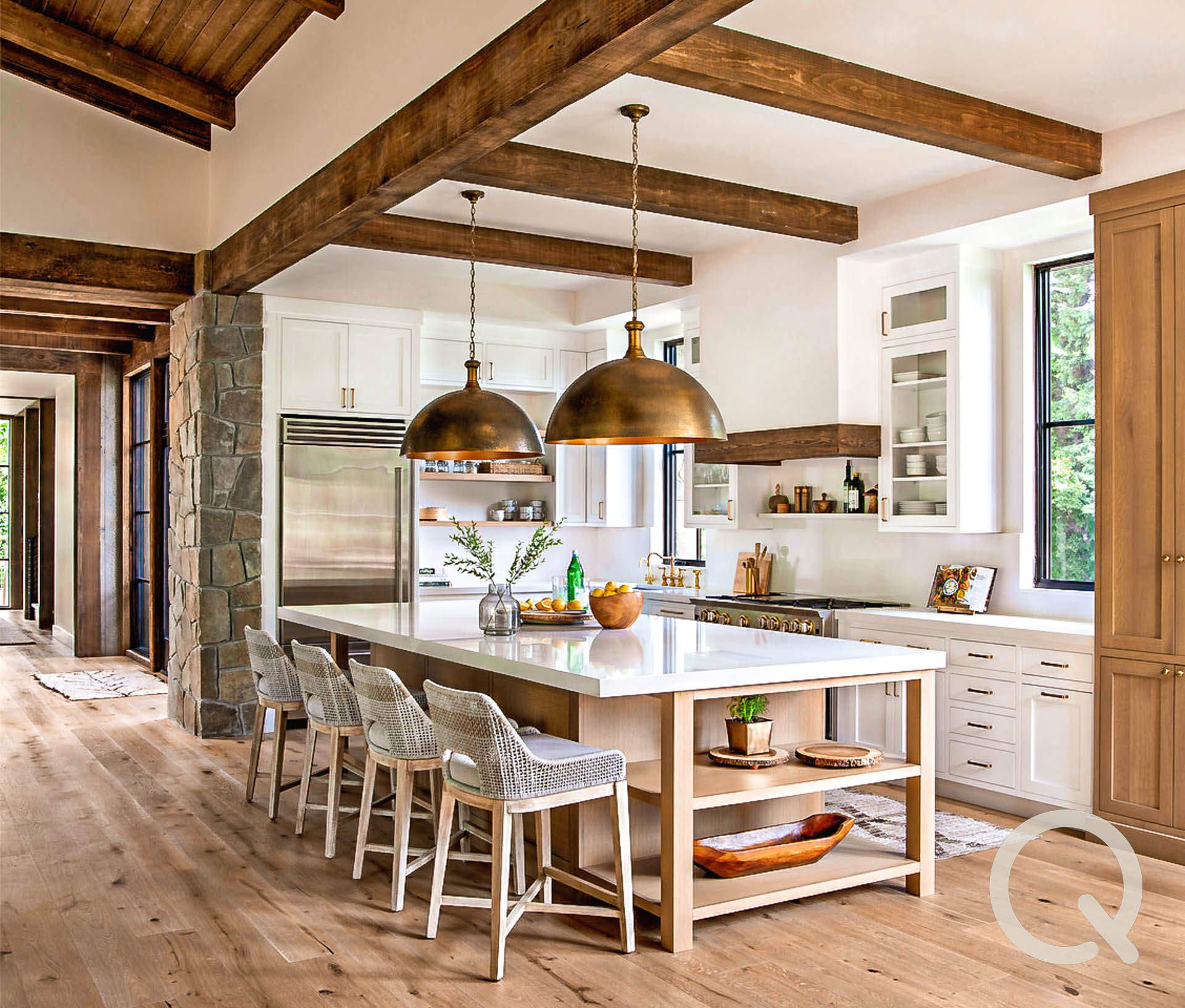
Establishing a Textural Hierarchy
Start by identifying your primary texture—often the dominant cabinetry finish—then layer supporting textures throughout connected spaces. In a kitchen-to-pantry transition, you might maintain consistent wood tones while varying the texture application: smooth cabinet faces in the kitchen transitioning to fluted details in the pantry.
This approach creates visual interest while maintaining overall coherence, particularly important in open-concept homes where multiple spaces remain visible simultaneously.
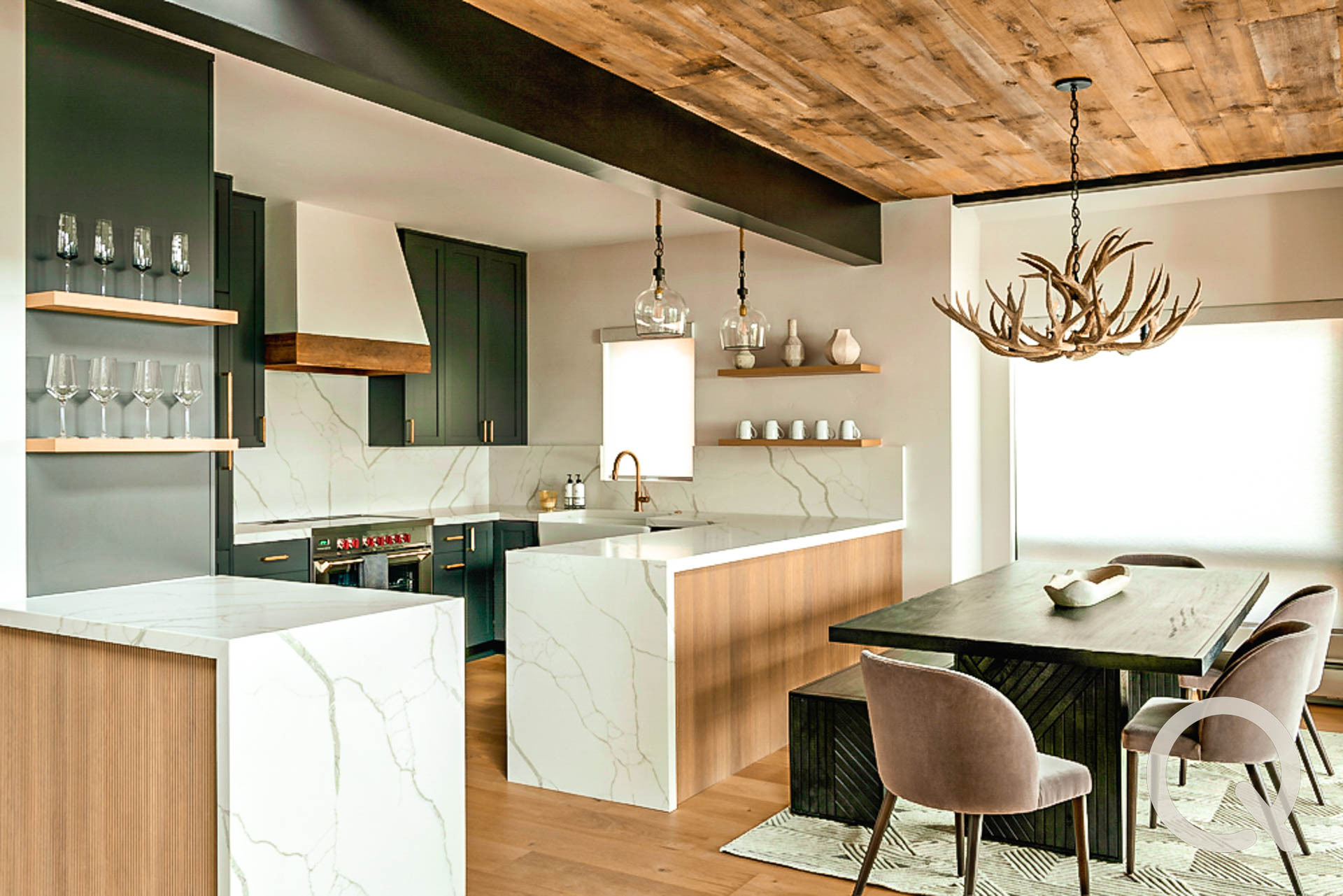
Material Flow Strategies
Consider how textures transition from room to room. A leathered granite kitchen island might flow into honed stone in the adjacent butler's pantry, maintaining tonal consistency while subtly shifting texture intensity. This creates natural progression rather than jarring contrast.
Flooring provides another opportunity for textural coordination. Wide-plank oak with hand-scraped texture in the kitchen can transition to smoother planks in adjacent spaces, maintaining wood family consistency while defining different zones.
Hardware and Detail Coordination
Consistent hardware textures throughout connected spaces create subtle unity. Brushed brass cabinet pulls in the kitchen coordinate with light fixtures and faucets in adjacent areas, creating a textural thread that ties spaces together.
A nuance in great design is paying attention to how different textures interact under varying light conditions throughout the day. Montana's dramatic natural light changes can significantly impact how textures appear and feel in connected spaces.
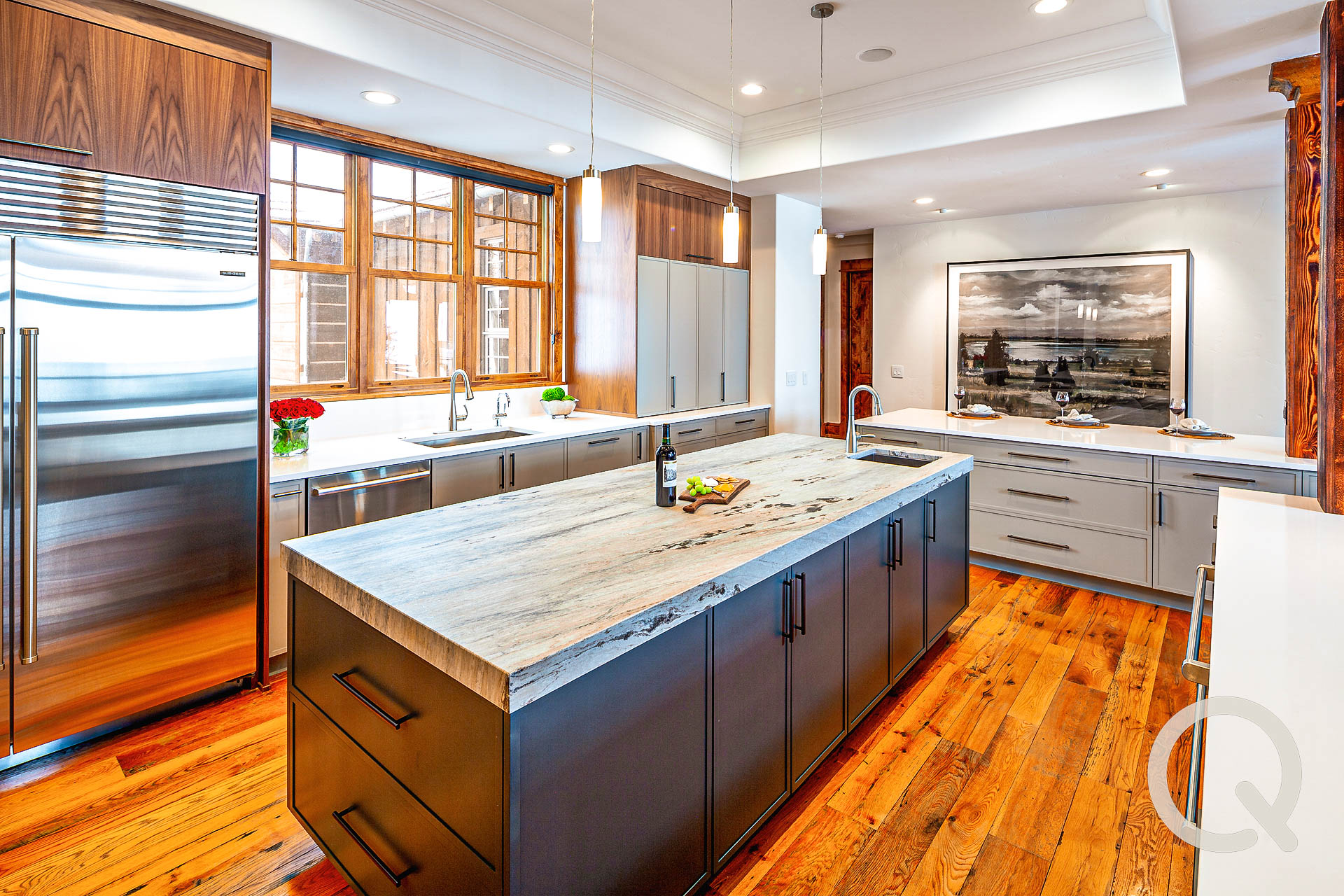
Layering Materials for Balance
Today's kitchens embrace contrast as much as cohesion. Think smooth quartz paired with rough-hewn wood shelving, or glossy backsplash tiles set against handcrafted zellige. These combinations prevent a kitchen from feeling too stark or sterile, layering in visual intrigue and tactile dimension.
The key lies in balancing refined and organic textures. A polished stone countertop gains warmth when paired with wire-brushed wood cabinetry, while sleek metal hardware provides crisp contrast against soft, matte cabinet finishes.
Textures That Connect to Place
In Montana homes, the most successful textural choices create connections to the surrounding landscape. Reclaimed wood beams, natural stone accents, or weathered metal finishes don't just add visual interest—they carry stories of place and authenticity.
More homeowners are choosing organic and imperfect textures to make their kitchens feel less like showrooms and more like lived-in, welcoming spaces that reflect their mountain lifestyle.

Wellness Through Texture
Since the kitchen often serves as the emotional center of mountain homes—particularly during long winter months—designers are using textures to promote comfort and calm. Linen upholstery, clay-finished surfaces, or soft matte cabinetry tones create an atmosphere that feels relaxed and restorative.
These tactile choices matter as much as function when creating kitchens that support daily well-being and seasonal entertaining patterns common in Bozeman area homes.
Sustainable Beauty
Texture becomes a natural expression of sustainability, allowing design to feel both grounded and refined. Conscious material choices introduce layers of depth and warmth, softening the precision of modern layouts while respecting environmental responsibility—values that resonate strongly with Montana homeowners.
Reclaimed materials, locally sourced stone, and natural fiber elements can create rich textural palettes while supporting sustainable design practices.
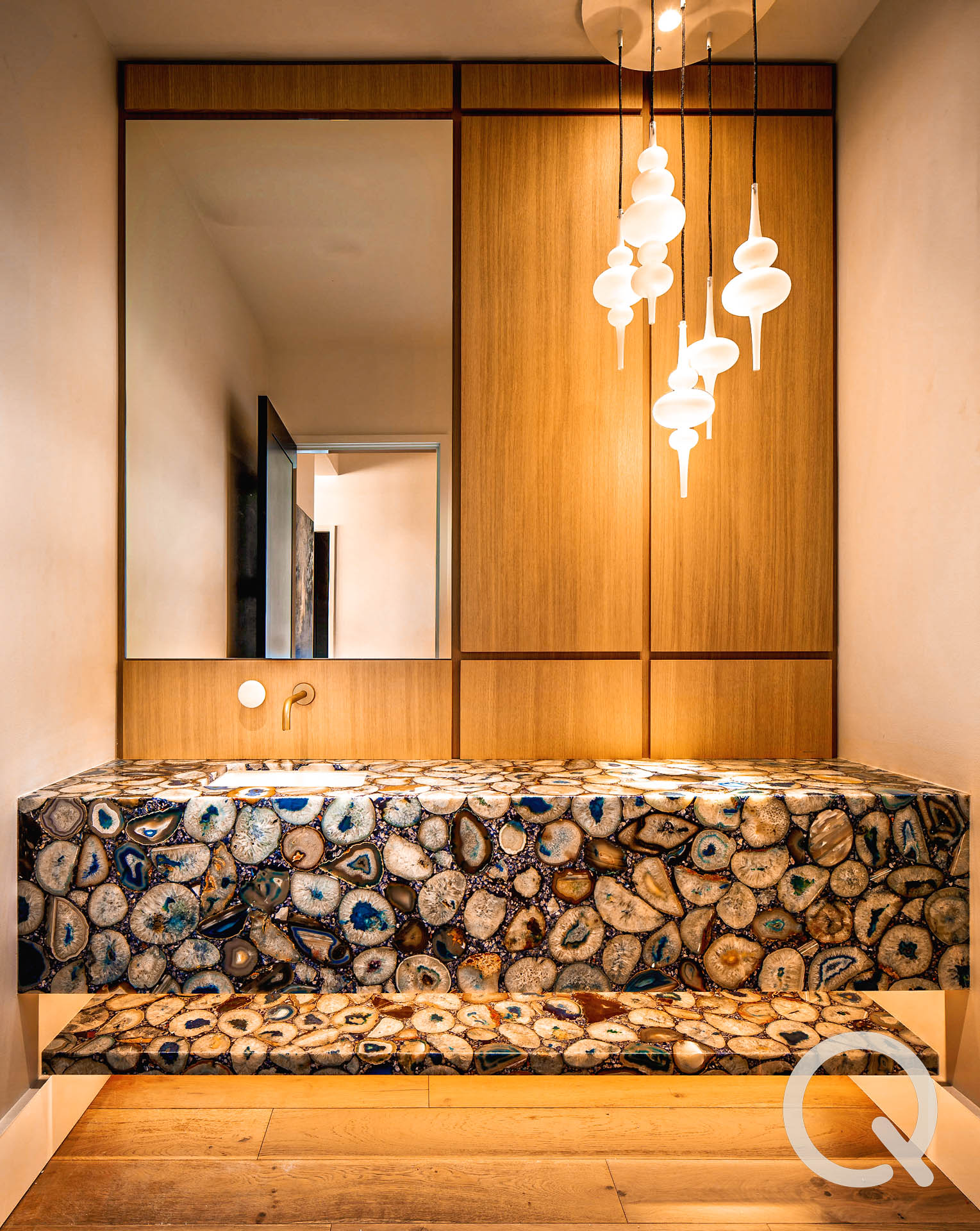
Technical Considerations for Multi-Room Projects
Successfully coordinating textures across connected spaces requires understanding how different materials behave over time. Wood finishes may age differently in varying light conditions, while stone textures can show wear patterns based on usage frequency.
Plan for maintenance and longevity when selecting textural elements. Consider how finishes will perform in high-use kitchen areas versus lower-traffic pantry spaces, ensuring your textural choices remain beautiful and functional over time.
Beyond Visual Appeal
A kitchen is more than a place to cook—it's where mountain life happens. By thoughtfully layering textures, from the countertops you touch daily to the natural fibers woven into seating, kitchens can move beyond visual interest and become truly immersive spaces.
It's about designing for the senses, creating rooms that feel as good as they look while reflecting the natural beauty that surrounds Montana homes.
In modern kitchens, texture is no longer an afterthought. It's a key ingredient—one that blends comfort, character, and connection into the heart of the home. For those planning kitchen projects in the Gallatin Valley, understanding how to coordinate these textural elements across multiple spaces can transform good design into something truly exceptional.
Ready to experience how texture can transform your kitchen project? Visit our showroom to see and feel these textural trends in person, and discover how thoughtful material coordination can create spaces that engage all the senses.